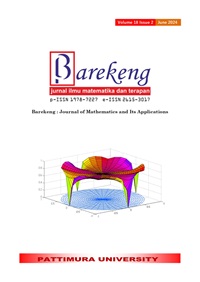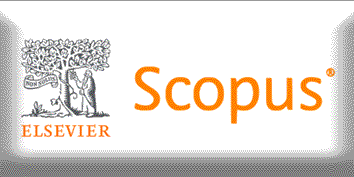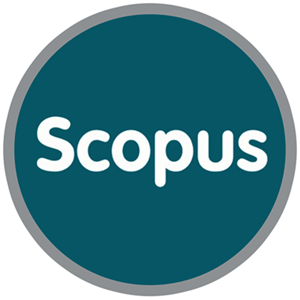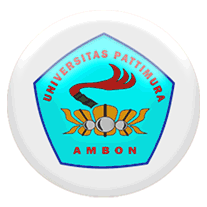DETERMINATION OF COFFEE FRUIT MATURITY LEVEL USING IMAGE HISTOGRAM AND K-NEAREST NEIGHBOR
Abstract
Coffee has a very important role in the Indonesian economy, as one of the country's foreign exchange contributors in the plantation sector. Therefore, coffee processing is very important in determining the quality of coffee. The procedure for choosing and evaluating the coffee fruit's physical quality is one of the most crucial steps. The step of determining the maturity level of coffee fruit is carried out using the image histogram and K-Nearest Neighbor (KNN) method. This research uses the KNN algorithm with classification stages that will show the level of accuracy value according to the value of k = 5 used when processing the classification of coffee fruit image data. In order to complete this step, the features of the coffee fruit are identified using its color. The qualities of quality coffee fruit, which is flawlessly red in color. Twenty images total—ten of which are of ripe coffee fruit and ten of which are of raw coffee fruit—were used in this study. The test results were carried out using rapidminer tools using 40% training data and 60% testing data from the total data set. Based on the test results, it gives an accuracy value of 100%, meaning that the data set can be used in the next stage as valid data to be used.
Downloads
References
D. S. Shreya, “Digital Image Processing and Recognition Using Python,” Int. J. Eng. Appl. Sci. Technol., vol. 5, no. 10, pp. 319–322, 2021, doi: 10.33564/ijeast.2021.v05i10.046.
A. McAndrew, A Computational Introduction to Digital Image Processing, Second Edition, Melbourne, Australia: CRC Press, 2016.
Z. K. Simbolon, S. A. Syakry, Mulyadi, and M. Syahroni, “Separation of the Mature Level of Papaya Callina Fruit Automatically Based on Color (RGB) uses Digital Image Processing,” IOP Conf. Ser. Mater. Sci. Eng., vol. 536, no. 1, 2019, doi: 10.1088/1757-899X/536/1/012127.
T. Meruliya, P. Dhameliya, J. Patel, D. Panchal, P. Kadam, and S. Naik, “Image Processing for Fruit Shape and Texture Feature Extraction - Review,” Int. J. Comput. Appl., vol. 129, no. 8, pp. 30–33, 2015, doi: 10.5120/ijca2015907000.
Y. Guan, F. Zhou, and J. Zhou, “Research and Practice of Image Processing Based on Python,” J. Phys. Conf. Ser., vol. 1345, no. 2, 2019, doi: 10.1088/1742-6596/1345/2/022018.
D. Iskandar and Marjuki, “Classification of Melinjo Fruit Levels Using Skin Color Detection With Rgb and Hsv,” J. Appl. Eng. Technol. Sci., vol. 4, no. 1, pp. 123–130, 2022, doi: 10.37385/jaets.v4i1.958.
I. D. Damayanti, “Karakterisasi Tingkat Kematangan Buah Kopi Menggunakan Pendekatan Statistik,” J. Sains dan Sist. Teknol. Inf., vol. 5, no. 2, pp. 119–127, 2023, doi: 10.59811/sandi.v5i2.62.
M. I. Pratama, . K., and A. H. Muhammad, “Classification of coffee beans roast maturity levels based on digital image processing color using the KNN and PCA method,” Int. J. Sci. Res. Publ., vol. 12, no. 12, pp. 138–148, 2022, doi: 10.29322/ijsrp.12.12.2022.p13217.
A. B. Abadi and S. Tahcfulloh, “Digital Image Processing for Height Measurement Application Based on Python OpenCV and Regression Analysis,” Int. J. Informatics Vis., vol. 6, no. 4, pp. 763–770, 2022, doi: 10.30630/joiv.6.4.1013.
I. D. Damayanti, A. Michael, H. K. Y. Piopadang, and P. Setriyanti, “Klasifikasi Citra Daging Babi dan Daging Kerbau Menggunakan Histogram Citra dan GLCM,” vol. 4, no. 2, pp. 188–200, 2023.
R. Munir, Pengolahan Citra Digital dengan Pendekatan Algoritmik, Bandung: Penerbit Informatika, 2004.
H. P. Hanusch, "Digital Image Processing Using Matlab", Institute of Geodesy and Photogrammetry, ETH Zurich.
M. Pydi and K. L. Sailaja, “A Framework for the Image Retrieval System Based on Histogram Normalization Technique with Python,” Int. J. Eng. Adv. Technol., vol. 9, no. 4, pp. 2300–2304, 2020, doi: 10.35940/ijeat.d9060.049420.
A. Vyas, S. Yu, and J. Paik, Fundamentals of digital image processing. 2018. doi: 10.1007/978-981-10-7272-7_1.
A. W. Satria Bahari Johan, S. W. Putri, G. Hajar, and A. Y. Wicaksono, “Modified KNN-LVQ for Stairs Down Detection Based on Digital Image,” Lontar Komput. J. Ilm. Teknol. Inf., vol. 12, no. 3, p. 141, 2021, doi: 10.24843/lkjiti.2021.v12.i03.p02.
S. Anraeni, D. Indra, D. Adirahmadi, S. Pomalingo, Sugiarti, and S. H. Mansyur, “Strawberry Ripeness Identification Using Feature Extraction of RGB and K-Nearest Neighbor,” 3rd 2021 East Indones. Conf. Comput. Inf. Technol. EIConCIT 2021, pp. 395–398, 2021, doi: 10.1109/EIConCIT50028.2021.9431854.
S. Anraeni and Herman, “Hybrid lacunarity and euclidean distance algorithms for kidney health classification through iris image,” Int. J. Sci. Technol. Res., vol. 8, no. 11, pp. 486-488, 2019.
S. Basar, M. Ali, G. Ochoa-Ruiz, M. Zareei, A. Waheed, and A. Adnan, “Unsupervised color image segmentation: A case of RGB histogram based K-means clustering initialization,” PLoS One, vol. 15, no. 10 October, pp. 1–21, 2020, doi: 10.1371/journal.pone.0240015.
M. Effendi, M. Jannah, and U. Effendi, “Corn quality identification using image processing with k-nearest neighbor classifier based on color and texture features,” IOP Conf. Ser. Earth Environ. Sci., vol. 230, no. 1, 2019, doi: 10.1088/1755-1315/230/1/012066.
Copyright (c) 2024 Irene Devi Damayanti, Aryo Michael

This work is licensed under a Creative Commons Attribution-ShareAlike 4.0 International License.
Authors who publish with this Journal agree to the following terms:
- Author retain copyright and grant the journal right of first publication with the work simultaneously licensed under a creative commons attribution license that allow others to share the work within an acknowledgement of the work’s authorship and initial publication of this journal.
- Authors are able to enter into separate, additional contractual arrangement for the non-exclusive distribution of the journal’s published version of the work (e.g. acknowledgement of its initial publication in this journal).
- Authors are permitted and encouraged to post their work online (e.g. in institutional repositories or on their websites) prior to and during the submission process, as it can lead to productive exchanges, as well as earlier and greater citation of published works.






1.gif)



